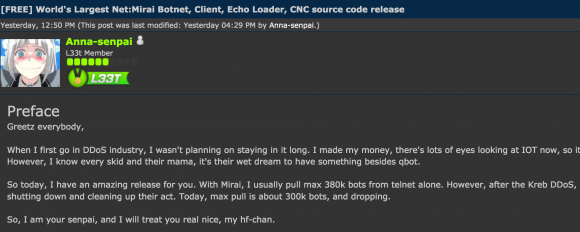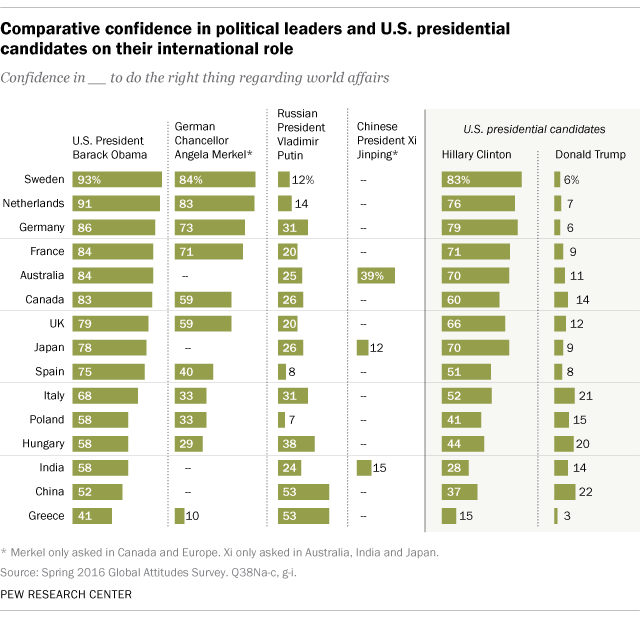On Friday, I wrote about an amicus brief, for me and 54 other antitrust and competition policy scholars, that I wrote in Teladoc v. Texas Medical Board, a Fifth Circuit case involving the antitrust state-action immunity doctrine.
For a summary of the argument, see that post, but here’s an even shorter background: the Texas Medical Board wants to regulate telehealth providers; one such provider, Teladoc, sued the Board under federal antitrust law, arguing that the rule the Board promulgated was anticompetitive; and the Board claimed that it was immune from federal antitrust law as a state agency. Agencies composed of market participants need to be actively supervised by the state if they want to get immunity; so the question here is whether state-court administrative-law judicial review counts as “active supervision” within the meaning of the doctrine.
On Monday, I reproduced Part I of the brief, on “The Problem of Occupational Boards Dominated by Market Participants”. On Tuesday, I reproduced Part II, on why “Texas Administrative-Law Judicial Review Is Not Active Supervision”. Today, I’ll wrap it up, with the two last sections of the brief: “The Features of Texas Law That Supposedly Control Self-Dealing Are Irrelevant to Whether There Is Active Supervision” and “State Sovereignty and Cooperative Federalism Concerns Should Not Affect the Resolution of This Case”.
* * *
III. The Features of Texas Law That Supposedly Control Self-Dealing Are Irrelevant to Whether There Is Active Supervision
A. The Board Does Not Argue That These Features Constitute Active Supervision, Merely That They Should Lead to a Weaker Analysis
Despite its view that judicial review is “sufficient” supervision, the Board spends many pages talking about other features of Texas law. For instance, the fact that Board members are appointed by, and may be removed by, the Governor and Senate, and the fact that Board members are specialists from different fields, are supposedly “[f]eatures of the Board’s membership [that] minimize the risk that [the Board] will forego its mandate and act with only a private purpose.” Appellants’ Br. at 38–41. Good-government laws and reporting requirements “further reduce the risk that the Board will shirk its official duties and pursue only private interests.” Id. at 41–45. Later, the Board points to features of legislative oversight that “reinforce[]” or “buttress[]” active supervision, id. at 50–52.
The Board does not argue that these features themselves constitute active supervision. And wisely so: Such an argument would directly contravene the rule of Patrick, 486 U.S. at 102, Ticor, 504 U.S. at 633, and N.C. Dental, 135 S. Ct. at 1112, that active supervision must extend to the specific challenged actions. See id. (“The second Midcal requirement . . . seeks to avoid [the] harm [of private self-dealing] by requiring the State to review and approve interstitial policies made by the entity claiming immunity.”); id. at 1116 (“The supervisor must review the substance of the anticompetitive decision, not merely the procedures followed to produce it; the supervisor must have the power to veto or modify particular decisions to ensure they accord with state policy; and the ‘mere potential for state supervision is not an adequate substitute for a decision by the State.’” (citations omitted) (quoting Ticor, 504 U.S. at 638)); see also 1A Areeda & Hovenkamp, supra, ¶ 226c1, at 185–87 (“Of course, the active supervision must extend to the anticompetitive aspects of challenged conduct.”).
Rather, the Board argues that these features, because they control self-dealing and increase political accountability, should lead this Court to apply the active-supervision requirement less strictly than it otherwise would. See Appellants’ Br. at 41 (arguing that “the necessary degree of active supervision” depends on the “risk that [the Board’s] rulemaking does not pursue state policy,” which is mitigated by “its political accountability and structure”).
The argument of Part II, supra, implies that state judicial review is not active supervision at all, even under a weak standard, because it does not answer whether the merits of the specific Board decision have been actually approved by disinterested officials, it is not de novo, it does not occur before anticompetitive harm is suffered, and it relies on costly litigation by victims. So whether the active-supervision requirement should apply in watered-down form is not important here: The Board should be denied immunity regardless.
Nonetheless, the Board is incorrect that the active-supervision requirement should be watered down, for the following two reasons. First, N.C. Dental did not consider these institutional details relevant—rather, it broadly stressed the anticompetitive dangers posed by market-participant-dominated agencies. Second, a sliding scale of active-supervision analysis based on the estimated risk of self-dealing or extent of political accountability in particular cases would be unadministrable.
B. The N.C. Dental Court’s Reasoning and Holding Do Not Support an Active-Supervision Inquiry That Depends on the Risk of Self-Dealing
1. The Risk of Self-Dealing Only Affects the Threshold Determination of Whether Active Supervision Is Required
In N.C. Dental, the Supreme Court did look to “the risk that active market participants will pursue private interests in restraining trade.” 135 S. Ct. at 1114. But it did not suggest that this risk affected the stringency of the active-supervision requirement. Rather, this risk informed the threshold question whether to require compliance with the active-supervision prong of Midcal at all. Self-interest determines whether a Board needs supervision, not whether it is supervised. And the Board has conceded that it needs supervision, since it is dominated by market participants. Bringing in self-interest at this stage, to determine whether the Board is supervised, would amount to relitigating that issue.
The Board states that required active supervision “is ‘flexible’ and ‘context-dependent,’” and that “[t]hat requires a context-specific assessment” of the risk of self-dealing, Appellant’s Br. at 35 (citing N.C. Dental, 135 S. Ct. at 1116, 1114) (emphasis added). But yoking these statements together with a “[t]hat requires” is misleading. The context-specific assessment of the risk of self-dealing is the reason that Midcal’s active-supervision prong applies at all; assessing the precise degree of self-dealing risk is not part of the inquiry into how much supervision is enough. Moreover, N.C. Dental made clear that, despite the flexible and context-dependent nature of the test, there are a “few constants”: The supervision must be on the merits, must be de novo, and must have actually occurred rather than being merely potential. See N.C. Dental, 135 S. Ct. at 1116. None of those requirements is met here.
Thus, N.C. Dental explained that the actor in Hallie “was an electorally accountable municipality with general regulatory powers and no private price-fixing agenda,” 135 S. Ct. at 1114. The risk of self-dealing was thus low. But that consideration led the Court to exempt municipalities from the active-supervision prong altogether.
Conversely, in N.C. Dental itself, the Board of Dental Examiners was an “agenc[y] controlled by market participants,” which was “more similar to private trade associations vested by States with regulatory authority.” Id. Therefore, that dental board was fully subject to the active-supervision prong—just as if it were a trade association or other private actor.
When the Court talked about self-dealing, it deliberately painted with a broad brush to encompass all market-participant-controlled agencies, because market participation inherently provides “private anticompetitive motives”:
Limits on state-action immunity are most essential when the State seeks to delegate its regulatory power to active market participants, for established ethical standards may blend with private anticompetitive motives in a way difficult even for market participants to discern. Dual allegiances are not always apparent to an actor. In consequence, active market participants cannot be allowed to regulate their own markets free from antitrust accountability.
Id. at 1111. The Court added: “State agencies controlled by active market participants, who possess singularly strong private interests, pose the very risk of self-dealing Midcal’s supervision requirement was created to address.” Id. at 1114.
This is why the risk of self-dealing goes to the threshold question whether the active-supervision prong is required at all, not to how stringently to apply this prong. Market participation leads to (possibly unconscious) “[d]ual allegiances” and “private anticompetitive motives,” id. at 1111, and private parties “may be presumed to be acting primarily on [their] own behalf,” Hallie, 471 U.S. at 45. “Midcal’s supervision rule stems from the recognition that ‘[w]here a private party is engaging in anticompetitive activity, there is a real danger that he is acting to further his own interests, rather than the governmental interests of the State.’” N.C. Dental, 135 S. Ct. at 1112 (quoting Patrick, 486 U.S. at 100). The risk of self-dealing is why supervision is required; but once supervision is required, the only question is whether disinterested officials have actually approved of the merits of the specific anticompetitive policy.
The Supreme Court had the opportunity to introduce further gradations into the active-supervision prong, based on finely grained assessments of the risk of self-dealing for particular agencies, whether the agency officials were appointed or elected, or whether the particular agency was subject to good-government statutes like Public Records Acts and open-meetings laws. But it did not.
Instead, the Supreme Court held—in a sentence helpfully marked The Court holds today—that the same rule obtains for all market-participant-controlled boards: “The Court holds today that a state board on which a controlling number of decisionmakers are active market participants in the occupation the board regulates must satisfy Midcal’s active supervision requirement in order to invoke state-action antitrust immunity.” Id. at 1114. Since the absence of supervision was conceded in N.C. Dental, the Court did not commit itself to whether active supervision is governed by a sliding scale that depends on the precise extent of self-dealing and accountability; but N.C. Dental’s reasoning does not support an approach that depends on these factors.
(The Board cites the Areeda & Hovenkamp treatise to support the sliding scale idea. See Appellants’ Br. at 41 (citing 1A Areeda & Hovenkamp, supra, ¶ 227a, at 221(“[T]he kind of supervision appropriate for a public body, even of the kind involved in Hoover, could well be far less than for an entirely private party.”). But note the “could well” language: This is merely a suggestion of what might be, based on issues left unresolved in Hoover v. Ronwin, 466 U.S. 558 (1984). Moreover, this pre-N.C. Dental language does not suggest that an agency can dispense with the “few constants of active supervision,” 135 S. Ct. at 1116.)
2. Legislative Oversight Likewise Does Not Convert State-Court Judicial Review into Active Supervision
The Board further notes two aspects of legislative oversight: first, the review of rules by a legislative committee; and second, the sunset-review process. The Board does not argue that these constitute active supervision, see Appellants’ Br. at 51 (“[E]ven if this legislative review of proposed rules does not amount to active supervision on its own . . . .”); id. at 52 (similar). But it suggests that legislative oversight nonetheless “buttresses the supervision provided by judicial review,” id. at 51; see also id. at 52 (“reinforces”).
Legislative oversight thus plays a similar role to the other features of Texas law discussed above: In the Board’s view, it can bolster an otherwise insufficient supervision regime.
But this purported oversight does not help the Board’s case. A particular rule might never be scrutinized by a committee, because committees have other things on their agenda. If a committee does nothing, the rule goes into effect; committee review is thus “mere potential” review and looks like the “negative option” disapproved in Ticor, see 504 U.S. at 638. In fact, it is even worse than the negative option: Even if these committees act (perhaps long after anticompetitive harm is suffered), their only power is to “send to a state agency a statement supporting or opposing adoption of a proposed rule,” Tex. Gov’t Code § 2001.032(c), and even then a committee’s view is not that of the State as a whole.
As for sunset review, the Board’s last sunset review was in 2005 (before these rules were adopted), and the next one will be in 2017—after anticompetitive harm will have been suffered. Moreover, sunset review only reviews the enabling statute, not the agency’s regulations or interpretations. This, too, is “mere potential” review at best.
The Board cites no authority for combining individually insufficient features. But regardless, every feature here is so weak that their sum still does not answer the question relevant to state-action immunity: whether the merits of the Board’s specific anticompetitive actions have actually been approved by disinterested officials.
C. A Sliding Scale of Active-Supervision Scrutiny Depending on the Risk of Self-Dealing Would Be Unadministrable
It is true that there is no one-size-fits-all approach to active supervision; the inquiry is “flexible” and “context-dependent.” N.C. Dental, 135 S. Ct. at 1116. But the analysis is not therefore different for different types of market-participant-dominated agencies. (The antitrust Rule of Reason and the negligence rule of tort law are flexible and context-dependent, but this does not mean that there are different rules for different entities.) An inquiry that depended on the risk of self-dealing and extent of accountability in every case would be unadministrable. Moreover, it would increase uncertainty for state officials, who would not easily be able to determine whether a particular supervisory regime would be sufficient to avoid treble damages.
A uniform approach is a boon to practitioners and judges. It means that when a court hands down a decision holding whether a particular type of supervision is sufficient, that decision becomes useful precedent. But if the stringency of the active-supervision inquiry depends on the agency-specific risks of self-dealing, every agency in every State is potentially unique, depending on the details of oaths, appointment and removal provisions, state APAs, and the stringency of judicial review. Every precedent will be of limited value, and every case will require sifting through a mass of cases that are not entirely on point and, to some extent, evaluating every agency’s institutional constraints de novo.
The judiciary is ill-suited to estimating these fine gradations of risks of self-dealing. It is for similar reasons that the Supreme Court, in City of Columbia v. Omni Outdoor Advertising, Inc., 499 U.S. 365, 374–78 & n.5 (1991), rejected a “conspiracy” or “corruption” exception to state-action immunity. See also N.C. Dental, 135 S. Ct. at 1113 (calling such an exception “vague and unworkable”). This is also why antitrust doctrine has carved out areas of per se illegality and of “quick look” review, see, e.g., NCAA v. Bd. of Regents of Univ. of Okla., 468 U.S. 85, 109–10 & n.39 (1984); Cal. Dental Ass’n v. FTC, 526 U.S. 756, 770 (1999): Always requiring a full-blown Rule of Reason analysis would be overwhelming, even if theoretically more accurate.
Thus, there are strong administrability reasons to treat the active-supervision requirement as applying equally to all actors subject to the second prong of Midcal.
* * *
IV. State Sovereignty and Cooperative Federalism Concerns Should Not Affect the Resolution of This Case
Finally, the Board argues that immunity is necessary to maintain state sovereignty and cooperative federalism. Appellants’ Br. at 52–54. It is true that denying immunity affects the organization of state government. But this has always been implicit in state-action immunity.
Parker immunity is based on the notion that “an unexpressed purpose to nullify a state’s control over its officers and agents is not lightly to be attributed to Congress.” Parker, 317 U.S. at 351. Midcal recognized that “immunity for state regulatory programs is grounded in our federal structure.” Midcal, 445 U.S. at 103. N.C. Dental, even while denying immunity to a state agency, recognized that “[t]he Sherman Act protects competition while also respecting federalism.” 135 S. Ct. at 1117.
Parker and Midcal have always represented a compromise between state autonomy and federal supremacy. Because the Court already considered both federalism and antitrust values in Midcal and N.C. Dental, one should not take federalism into account again in individual cases. If one does not also simultaneously take antitrust (and federal supremacy) values into account in every case, the exercise is biased and therefore unfaithful to Midcal and N.C. Dental; but if one does consider antitrust values together with federalism values, one is merely replicating the Midcal and N.C. Dental inquiry, and the nature of precedent demands that one simply apply Midcal and N.C. Dental as straightforwardly as possible.
* * *
V. Conclusion
Therefore, the Board should be denied state-action immunity.










